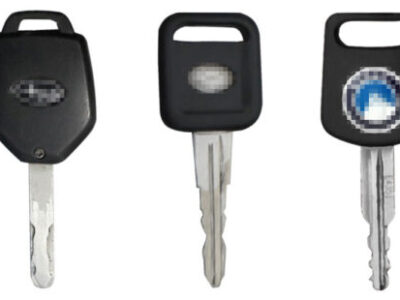
Avoiding Common Suspension Problems in the Fiat 500

The Fiat 500 is a popular city car known for its stylish design and agile handling. However, like any vehicle, it can be prone to certain suspension problems if not properly maintained. Suspension issues can lead to a rough ride, uneven tire wear, and compromised handling. Regular checks and maintenance can help prevent these problems. This article will discuss common suspension issues that can affect the Fiat 500 and provide tips on how to avoid them, ensuring a smooth and safe driving experience. Proper care can extend the vehicle's lifespan and performance.
Avoiding Common Suspension Problems in the Fiat 500: Tips and Best Practices
The Fiat 500 is a popular city car known for its stylish design and agile handling. However, like any vehicle, it can be prone to certain suspension problems if not properly maintained. Regular maintenance is key to preventing issues with the suspension system, which can lead to a rough ride, uneven tire wear, and compromised handling.
Understanding the Suspension System
The suspension system of the Fiat 500 is designed to provide a smooth ride and stable handling. It consists of MacPherson struts, coil springs, and anti-roll bars. Understanding how these components work together is essential to identifying potential problems and taking preventative measures. The MacPherson struts, for example, are responsible for absorbing bumps and maintaining tire contact with the road.
Common Suspension Problems and Their Causes
Some common suspension problems in the Fiat 500 include worn-out shock absorbers, broken coil springs, and loose or damaged anti-roll bar links. These issues can be caused by a variety of factors, including high mileage, poor road conditions, and inadequate maintenance. For instance, driving on rough roads can cause excessive wear on the shock absorbers, while failing to replace worn-out components can lead to more serious problems down the line.
Preventative Measures and Maintenance
To avoid common suspension problems in the Fiat 500, it's essential to stay on top of regular maintenance. This includes checking the condition of the suspension components, replacing worn-out parts, and ensuring that the vehicle's alignment is properly set. A well-maintained suspension system can help to improve the overall performance and safety of the vehicle.
| Suspension Component | Common Issues | Preventative Measures |
|---|---|---|
| MacPherson Struts | Worn-out or damaged struts | Regular inspection and replacement |
| Coil Springs | Broken or sagging springs | Inspection and replacement as needed |
| Anti-Roll Bar Links | Loose or damaged links | Tightening or replacement as needed |
Do Fiat 500 have suspension problems?
The Fiat 500 is a popular city car known for its stylish design and compact size. However, like any other vehicle, it can be prone to certain mechanical issues, including suspension problems. The suspension system of a car plays a crucial role in ensuring a smooth ride and stable handling. In the case of the Fiat 500, some owners have reported issues with the suspension, which can be caused by various factors such as wear and tear, poor road conditions, or manufacturing defects.
Common Suspension Issues in Fiat 500
The Fiat 500's suspension system is designed to provide a comfortable ride and responsive handling. However, some common issues have been reported, including worn-out shock absorbers, broken or damaged suspension components, and misaligned wheels. These problems can lead to a rough ride, uneven tire wear, and reduced handling performance.
- Worn-out shock absorbers can cause the car to bounce or oscillate excessively, making it uncomfortable to ride.
- Broken or damaged suspension components can lead to a loss of stability and control, particularly when cornering or braking.
- Misaligned wheels can cause uneven tire wear, leading to reduced traction and increased risk of tire failure.
Causes of Suspension Problems in Fiat 500
Suspension problems in the Fiat 500 can be caused by a range of factors, including driving habits, road conditions, and maintenance practices. For example, driving on rough roads or potholes can cause excessive wear on the suspension components, while neglecting regular maintenance can lead to premature failure of critical parts.
You may be interested in reading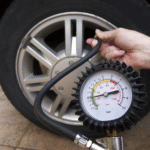 Ensuring Proper Tire Pressure in Your Fiat 500: A Safety Guide
Ensuring Proper Tire Pressure in Your Fiat 500: A Safety Guide- Driving on rough roads or potholes can cause damage to the suspension components, such as shock absorbers and struts.
- Neglecting regular maintenance, such as checking and replacing worn-out parts, can lead to premature failure of critical suspension components.
- Overloading the car or carrying heavy loads can put excessive stress on the suspension system, leading to premature wear and failure.
Diagnosing and Repairing Suspension Problems in Fiat 500
Diagnosing suspension problems in the Fiat 500 requires a thorough inspection of the suspension system, including visual checks and test drives. If a problem is identified, repairs can range from replacing worn-out parts to overhauling the entire suspension system.
- A visual inspection can help identify signs of wear or damage, such as leaks, rust, or excessive play in the suspension components.
- A test drive can help assess the car's handling and ride quality, providing clues about the source of the problem.
- Replacing worn-out parts, such as shock absorbers or struts, can help restore the car's original ride quality and handling performance.
What is the most common fault with the Fiat 500?

The most common fault with the Fiat 500 is related to its electrical and electronic systems. Owners have reported various issues, including problems with the car's infotainment system, navigation, and other electronic features.
Common Electrical Issues
The Fiat 500's electrical system can be prone to faults, particularly with the battery and alternator. This can cause a range of problems, including difficulty starting the car, dim or flickering headlights, and issues with the car's accessories. Some of the specific electrical issues that have been reported include:
- Faulty battery or alternator causing starting problems
- Issues with the car's wiring or electrical connections
- Problems with the car's computer system or software
Transmission and Gearbox Problems
Some Fiat 500 owners have reported issues with the car's transmission and gearbox. This can include problems with the clutch, gearbox bearings, or other components. In some cases, the transmission may be prone to slipping or hesitation, particularly when shifting gears. Some of the specific transmission and gearbox problems that have been reported include:
- Clutch failure or wear
- Gearbox bearing failure or wear
- Issues with the transmission's electronic control system
Engine and Performance Issues
The Fiat 500's engine can also be prone to certain issues, particularly with the TwinAir engine. Some owners have reported problems with the engine's performance, including rough idling, stalling, or a lack of power. Some of the specific engine and performance issues that have been reported include:
- Faulty oxygen sensor or other engine sensor
- Issues with the engine's fuel injection system
- Problems with the engine's timing chain or other internal components
What are the worst years for the Fiat 500?

The Fiat 500, a stylish and iconic city car, has been in production since 2007. While it has generally received positive reviews for its design and fuel efficiency, some model years have been plagued by issues. The worst years for the Fiat 500 are typically those with significant mechanical or reliability problems.
Early Model Years Issues
The early model years of the Fiat 500, particularly those from 2007 to 2012, were marred by several issues. One of the primary concerns was the car's reliability, with many owners reporting problems with the transmission and electrical systems.
You may be interested in reading Ensuring Proper Tire Pressure in Your Fiat 500: A Safety Guide
Ensuring Proper Tire Pressure in Your Fiat 500: A Safety Guide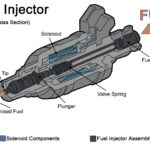 How to Identify and Fix Fuel Injector Seal Leaks in a Fiat 500
How to Identify and Fix Fuel Injector Seal Leaks in a Fiat 500- The dual-clutch transmission was prone to slipping and hesitation
- Some owners reported issues with the car's infotainment system
- The electrical system was also known to be temperamental
Reliability Concerns
Reliability has been a persistent issue with certain model years of the Fiat 500. The 2013 model year, in particular, saw a significant number of complaints regarding the car's reliability. Many owners reported issues with the car's engine, transmission, and electrical systems.
- Engine problems, including oil leaks and faulty fuel injectors
- Transmission issues, such as slipping and failure to engage gears
- Electrical system malfunctions, including faulty sensors and warning lights
Safety Concerns
Some model years of the Fiat 500 have also been criticized for their safety. The 2012 model year, for example, was recalled due to concerns over the car's airbag system.
- The airbag system was prone to malfunctioning
- Some owners reported issues with the car's brakes
- The car's structural integrity was also a concern in certain crash tests
Why is my Fiat 500 jerking?
The Fiat 500 is a popular car known for its stylish design and compact size. However, some owners have reported that their vehicle jerks or hesitates when accelerating. There are several potential reasons for this issue.
Possible Causes of Jerking
The jerking motion in your Fiat 500 could be due to a variety of factors related to the engine, transmission, or other components. One possible cause is a problem with the fuel system, such as a faulty fuel injector or a clogged fuel filter.
- A dirty or clogged air filter can also cause the engine to hesitate or jerk, as it disrupts the air-fuel mixture.
- A malfunctioning throttle position sensor can send incorrect signals to the engine computer, leading to jerking or stuttering.
- A faulty spark plug or ignition coil can cause the engine to misfire, resulting in a jerking motion.
Transmission problems can also cause the Fiat 500 to jerk or hesitate, particularly when shifting gears. A low transmission fluid level or dirty transmission fluid can cause the transmission to malfunction.
- Worn or damaged transmission components, such as clutch packs or bands, can cause the transmission to slip or jerk.
- A faulty transmission solenoid or sensor can disrupt the transmission's ability to shift smoothly.
- A clogged transmission filter can restrict fluid flow, leading to jerking or hesitation.
Diagnostic Steps
To diagnose the issue with your Fiat 500, it's essential to gather more information about the jerking motion. You can start by checking the dashboard warning lights and noting any error messages.
- Check the fuel filter and air filter for blockages or dirt.
- Use a scan tool to monitor the engine's performance and check for any trouble codes.
- Consult a mechanic or a Fiat dealership for further diagnosis and repair.
Frequently Asked Questions
What are the most common suspension problems in the Fiat 500?
The most common suspension problems in the Fiat 500 include worn-out shock absorbers, faulty struts, and loose or damaged suspension components. These issues can cause uneven tire wear, reduced ride comfort, and compromised handling. Regular inspections can help identify these problems early, allowing for prompt repairs and preventing further damage.
How often should I inspect my Fiat 500's suspension?
It is recommended to inspect your Fiat 500's suspension every 12,000 to 15,000 miles, or as specified in your owner's manual. Regular inspections can help identify worn-out or damaged components, allowing for prompt repairs and preventing further damage. You should also inspect your suspension after driving on rough roads or experiencing unusual vibrations.
You may be interested in reading Ensuring Proper Tire Pressure in Your Fiat 500: A Safety Guide
Ensuring Proper Tire Pressure in Your Fiat 500: A Safety Guide How to Identify and Fix Fuel Injector Seal Leaks in a Fiat 500
How to Identify and Fix Fuel Injector Seal Leaks in a Fiat 500 Preventing Rust on Your Fiat 500: Tips for Longevity
Preventing Rust on Your Fiat 500: Tips for LongevityWhat are the signs of worn-out suspension components in the Fiat 500?
Signs of worn-out suspension components in the Fiat 500 include excessive bouncing or vibrations, uneven tire wear, and reduced ride comfort. You may also notice clunking or rattling noises when driving over bumps or making sharp turns. If you experience any of these symptoms, have your suspension inspected by a qualified mechanic to determine the cause and necessary repairs.
Can I replace suspension components myself in the Fiat 500?
While it is possible to replace some suspension components yourself, it is generally recommended to have a qualified mechanic perform the repairs. Suspension work can be complex and requires specialized tools and expertise. Improperly installed or adjusted suspension components can compromise your vehicle's safety and handling, so it's best to seek professional help to ensure the job is done correctly.

If you want to know other articles similar to Avoiding Common Suspension Problems in the Fiat 500 you can visit the category Tips.
Deja una respuesta


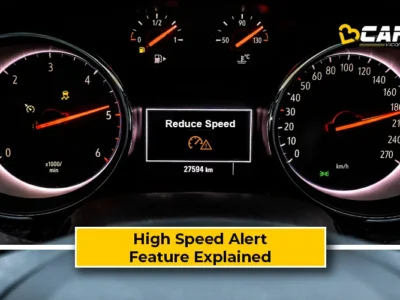
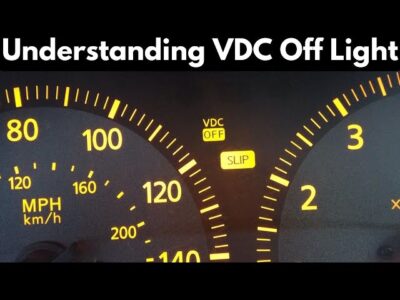



More content of your interest